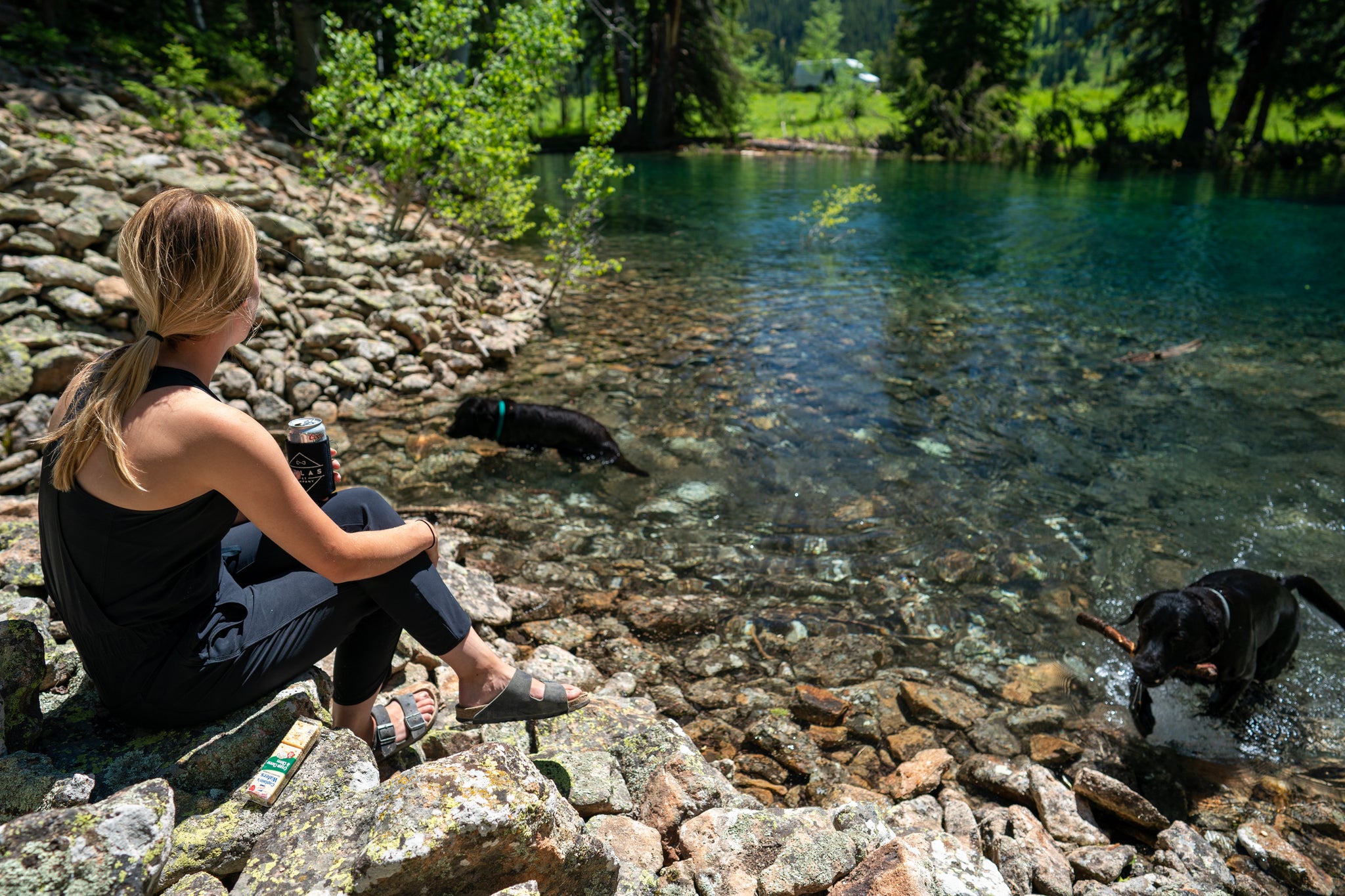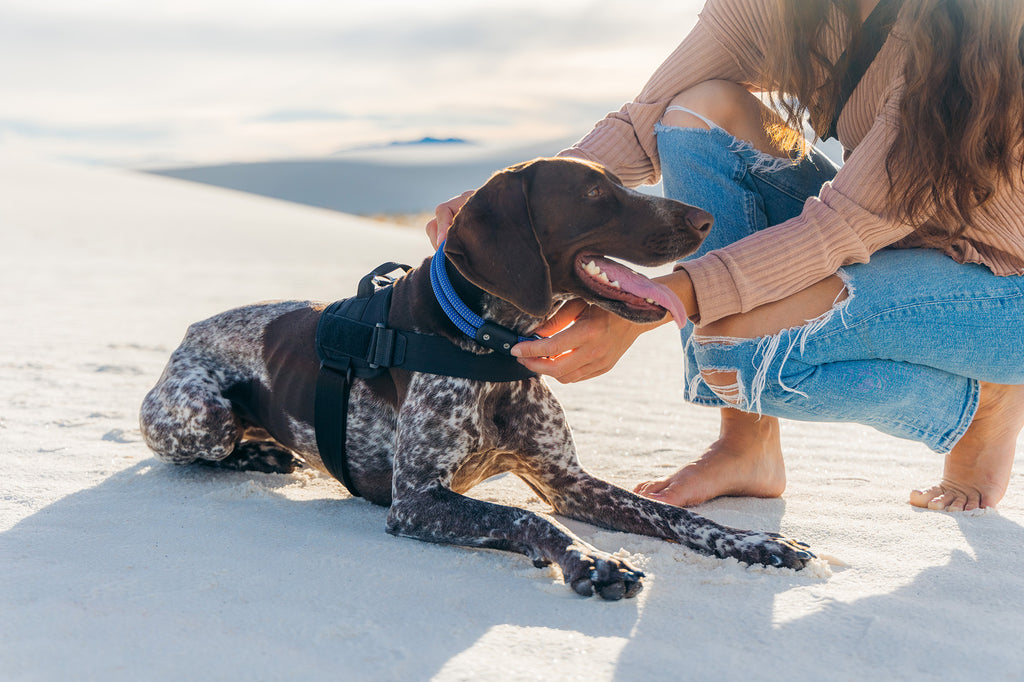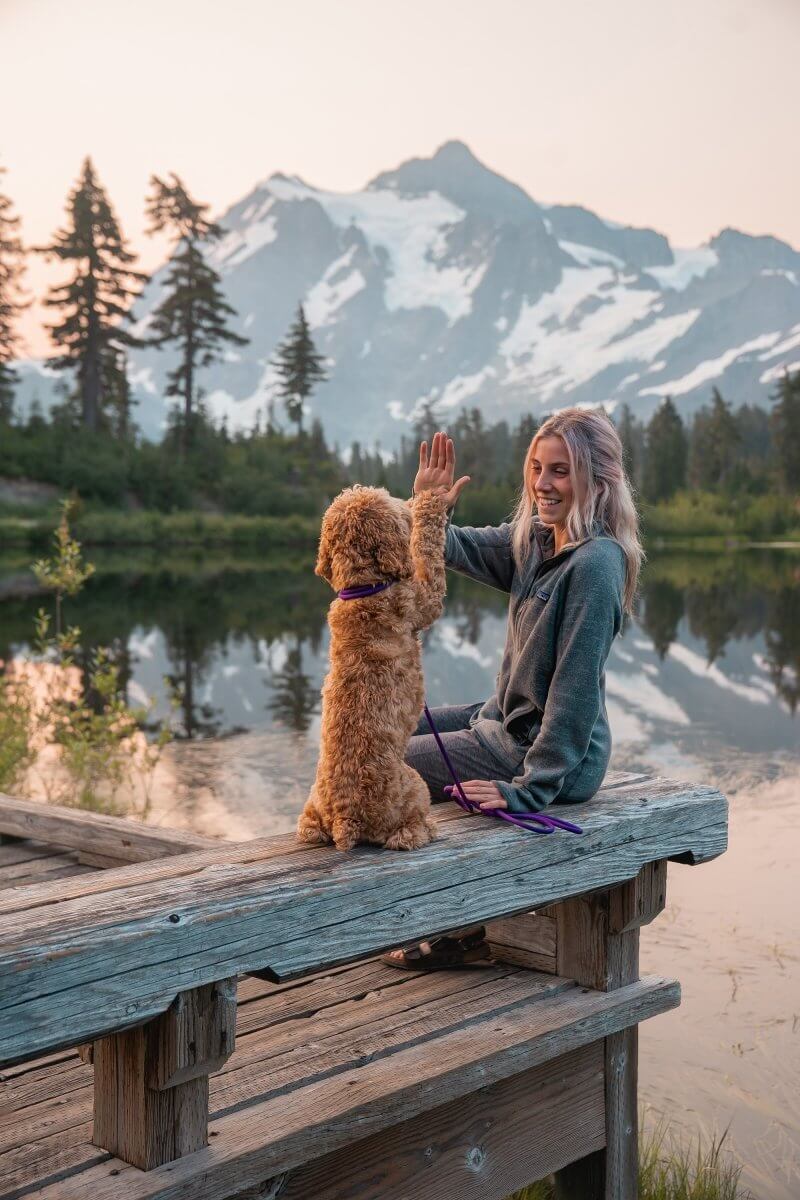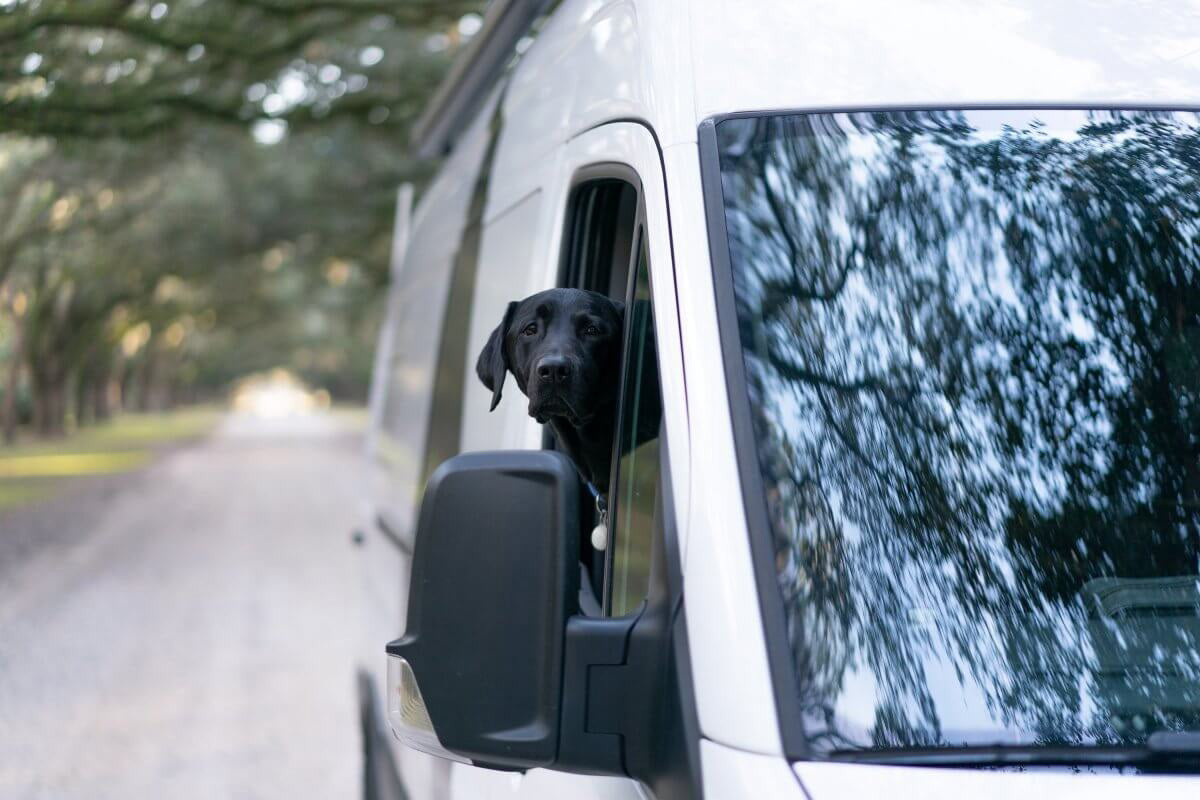Nothing beats getting back to nature with your beastly best friend - the crisp breeze in your fur, untouched trees to mark, hot dogs roasting over an open fire. It isn’t just a matter of packing some kibble and bringing the double-wide sleeping bag, though. With our expert tips, you and your pup will surely be happy campers.
 Make sure that dogs are welcome!
Make sure that dogs are welcome!Scout it out.
Dogs belong in nature, running wild and free, right? We’re with you, but public lands and private campgrounds have regulations for good reason. Take it from Ellen Eastwood, who wrote The Trail Hound's Handbook: Your Family Guide to Hiking with Dogs: “Make sure you know where you’re going and if your dog is welcome,” she advises. “The national parks and places where there’s a protected balance of nature, like Yosemite and Yellowstone, are very explicit about where dogs are allowed and where they’re not, and their website is good about being thorough about each park. State parks and national forests are a lot more inviting for dog owners, but there are still regulations.”
To be totally honest, after living in a Sprinter on the road for over a year, we found ourselves seeking out National Forest and BLM near the National Parks for a more enjoyable experience where we have more space and the dogs have more freedom. The best way to find 'unofficial' camping spots is an app called iOverlander that's filled with user-generated spot reports, reviews, and even images of the spot. While it might seem weird to follow a stranger's advice driving down dirt roads to random coordinates, it's an incredible community and honestly our trip wouldn't be the same without it.
Before you strike out on an outdoor overnight with your pup, check to see what pet mandates apply. GoPetFriendly and PetFriendlyTravel have excellent guides to spot-check local site rules by state. Privately-owned campgrounds, like KOA, even have some destinations that cater to dogs with their Kamp K9 program. These sites include fenced, dog park-like areas for your pup to comfortably roam in a novel environment. While these facilities might seem nice, we found they were catering to a much less adventurous crowd, and I highly recommend using other options where you can stay for free and be much closer to nature.
The good news: most campsites allow dogs. In general, if you can take your car there, you can also take your pup. The rough news? You’ll still have to check to see if daily adventures in the area allow pups. Many beaches, for example, have a strict no-dog policy, out of concern for sanitation and threatened wildlife. National Parks are also notorious for barring pups from hiking trails. Check out the comprehensive National Park Paws website to see if your day trips from the campground will be dog-friendly.
Pack for your pack.
Leave that second bag of jet-puffed marshmallows at home - camping with dogs doesn’t require a pup tent, but you’ll need a generous portion of your backpack for your dog’s gear. We put together this handy Camp Checklist to help you put together your buddy’s kit.
- Durable collar, leash, and harness - you’ll want to grab gear that can handle any wet and cold outside. We engineered our Lifetime series specifically to stand up to the rugged conditions you’ll encounter in the wild. Don’t forget to attach your pup’s license, vaccination, and ID tags before you set out.
- Poop bags - does a dog poop in the woods? He might, but it’s up to you to be a steward of the land and Leave No Trace. Clean up after your pup, and throw in an extra garbage bag to pack it out if your site has no waste facilities.
- Collapsible food/water dishes - these containers are incredibly useful. They’ll save more space in your pack than regular bowls, and you can bring one along on hikes to keep your dog hydrated on the trail.
Tip: don’t let your mutt drink from that river! Giardia and other nasties are common in the wild, especially in standing water. Unless you want an unhappy pup with the runs - or worse - bring enough potable water to last him the whole trip, too.
- Waterproof tarp and bedding - avoid having your dog sleep exposed to the ground - the thin material of the tent is not thick enough to protect him from hypothermia when the temperatures drop at night. Bonus - if he’s a nervous traveler, or if it’s simply his first camping trip, having your pup’s bed or blanket will signal to him that he has a comforting home base in an unfamiliar environment.
Optional gear:
- Dog backpack - if your pup is large enough to carry some gear and is comfortable doing so, invest in a pack for him. This way, he can lend a paw in hauling some lighter gear to the site or on day hikes (think collapsible water bowl, poop bags, etc). Avoid packing treats in his bag if they’re not well-sealed to avoid driving him crazy. If you’re heading out on a hot summer day, use your best judgment before strapping him in - a body pack increases the risk of overheating at higher temperatures.
-
Booties - all-weather foot protection is a smart investment for certain environments. If you’ll be traversing rough, snowy, or hot terrain, booties can be a paw saver. Headed on a desert hike? Foot gear can also prevent cactus catastrophes. We also carry some Vaseline for the areas that are more likely to cause dry paws.

Stay safe out there.
Even though you’ve planned and packed carefully, venturing out into the wild always involves unforeseen hazards. Take a tip from the Boy Scouts and be prepared.
Before you book your campsite, make sure that your dog is up to date on vaccines and tick and flea prevention. Leptospirosis, rabies, and Lyme disease are just a few of the medical dangers your pup may encounter in the wild; preparing for the worst is far better than putting your best friend at risk.
Research the area you’ll be camping in to anticipate what sort of wildlife you’ll encounter. Rattlesnake territory? Keep your eyes peeled and don’t let your curious pup sniff around rocks. Poison oak on the trail? Best to keep your buddy on a shorter leash while hiking to keep him from off-roading.
When packing your human first aid kit, make sure you have enough antiseptic, butterfly bandages, and gauze for everyone. Consider adding a few canine-specific items to use in case of emergency. Vet tape is amazing for pup wounds - it won’t stick to fur and is more flexible than standard tape. An old sock will come in handy to prevent your dog from licking leg and paw injuries. Heading to tick or cactus country? Tweezers are indispensible.
Tip: Never leave your dog unattended while camping. Even if he’s a very good boy who won’t wander off, there are too many risks in an unfamiliar environment, and fewer resources to manage emergency situations. Accompany your mutt when he relieves himself at night, and never leave him in the tent or tethered up alone while you adventure.
Get wild.
Nothing compares to the fun of getting back to nature with your favorite beast. With a little preparation, you’ll be waking up to birds chirping and a wagging tail on your greatest adventure yet.





























